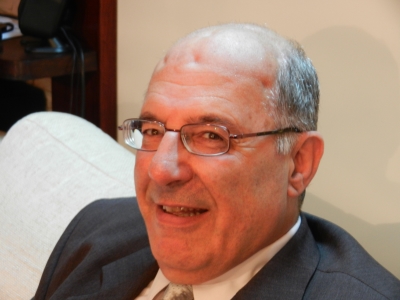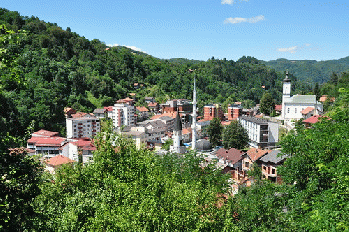False witness Momir NikoliÄ"�'s bogus evidence was spun to buttress Prosecution's reburial case
Key claims on which the Srebrenica genocide narrative is based rest upon the uncorroborated evidence of sole witnesses of dubious integrity. The public have been carefully shielded from knowledge of this fact. Dra�... �en ErdemoviÄ"� is a notorious example with his dubious account of Pilice executions. Dragan ObrenoviÄ"� invented a phone call, of which there is no record anywhere, from Zvornik Brigade security officer Drago NikoliÄ"� allegedly informing him of planned prisoner executions. Miroslav DeronjiÄ"�, as part of his plea bargain with the Prosecution, implicated top Serb military and political figures in the creation of an alleged plan to exterminate Srebrenica Muslims. Another important ICTY plea-bargainer whose statements were used by the Prosecution to fill huge factual gaps in its case was Bratunac Brigade security officer Momir NikoliÄ"�. His signed "Statement of Facts and Acceptance of Responsibility" given to the Prosecution is attached below.
When in 2003, several days before his trial was to begin, NikoliÄ"� decided to make a deal with the Prosecution in return for a predictable and lighter sentence, like other accused entering into a plea bargan agreement he committed to testify in support of the Prosecution case. There were two critical areas case where NikoliÄ"� could help the Prosecution. The first was the Fontana Hotel meetings held in Bratunac on July 11 and 12, 1995, where the Prosecution claimed the Serbian leadership formulated a plan to exterminate Srebrenica Muslims. The other area where the Prosecution case was weak but NikoliÄ"�'s testimony could help was in proving the number of alleged genocide victims. At the KrstiÄ"� trial, which had ended slightly over a year before, the Prosecution tried to make up for the disappointing results of exhumations carried out by its own forensic experts by alleging that most victim bodies were missing because they had been reburied elsewhere in order to cover up the prisoner executions. The evidence presented for such a scenario was so thin, however, that even the Chamber was unwilling to lend it much credence.
Momir NikoliÄ"�'s expressed willingness, in return for a lighter sentence, to testify that he had personal knowledge of the reburial operation and had participated in it was a major development for the Prosecution.
The Fontana Hotel meetings and their implications
According to the Prosecution, the "genocidal plan" was agreed on at several meetings held by the Serbian political and military leadership at the Fontana Hotel in Bratunac. The alleged consensus of those meetings was that the Srebrenica Muslim community would be physically destroyed. Momir NikoliÄ"� offered his incriminating account of those meetings, where he was present in the capacity of security officer for the Bratunac Brigade. He essentially confirmed ICTY Prosecution's claim that the main topic was planning for the extermination of Srebrenica Muslims.
The benefit the Prosecution would derive from NikoliÄ"�'s alleged eyewitness testimony can be seen in the KrstiÄ"� Chamber's Trial Judgment observations on this topic in 2001.
In Prosecutor v. KrstiÄ"�, Par.
Par.73 of the Trial Judgment
The Appellate Chamber in KrstiÄ"� admitted as well that it lacked concrete evidence of what was discussed at the meeting in the Fontana Hotel (the operative phrase in Par. 91 is: "it is reasonable to infer""), but it believed that in light of the totality of circumstances the meeting was an ideal opportunity to formulate such a plan for the "genocidal operation." It then proceeded on the theory that its assumption is what had actually happened (Prosecutor v. KrstiÄ"�, Appellate Judgment, Par. 91-94).
The Prosecution clearly sought to postulate the meetings at the Fontana Hotel as the Serbian equivalent of the Wannsee Conference in 1942, where Hitler and his staff decided to exterminate European Jews. The neat parallel is spoiled, however, by the fact that for Wannsee we know who was in attendance, the agenda, and the decisions that were made. That was conspicuously (and admittedly) missing in the case of the Fontana Hotel meetings, based on the evidence presented to the KrstiÄ"� Chamber. Momir NikoliÄ"�'s claim that the extermination of Srebrenica Muslims was, in fact, the main subject of discussion at the Fontana Hotel bolstered the Prosecution's case significantly, notwithstanding this witness' serious credibility issues.
NikoliÄ"�'s reburial operation claims
But the Fontana Hotel proceedings, where there were also other witnesses whose testimony could have been considered, was not where NikoliÄ"� made his principal contribution as a Prosecution witness. He became a pivotal (and sole, as it turned out) Prosecution witness when he agreed to testify about his personal knowledge of and participation in the reburial operation. The Prosecution was indeed struck by good fortune when shortly after the KrstiÄ"� trial, where paltry forensic evidence of about 2,000 victims was produced, NikoliÄ"� conveniently appeared to volunteer his sensational insights. On the issue of reburials, the KrstiÄ"� trial judgment remained notably non-committal. While absolving defendant KrstiÄ"� personally of knowledge or involvement in the alleged cover-up, the Chamber also admitted that evidence that reburial even took place was scarce at that point. While claiming in the KrstiÄ"� judgment that there was uncited forensic evidence of a "concerted effort to conceal the mass killings by relocating the primary graves," the Chamber also concedes that "the Prosecution presented very little evidence linking Drina Corps Brigades to the reburials and no eyewitnesses to any of this activity were brought before this Trial Chamber." (KrstiÄ"� Trial Judgment, par. 257)
That was a remarkable critique, almost a rebuke, to the Prosecution case. In plain language, it meant that at that point the case for reburials stood essentially unproved, even from the perspective of the prosecution-friendly trial chamber. Momir NikoliÄ"�'s timely appearance as just the missing eyewitness soon thereafter filled in the missing details. It occurred at a strategic moment to give the Srebrenica story another lease on life. A few years later the problem of missing bodies was solved more efficiently by means of DNA matches, but that would not have been possible but for the Tribunal's prior acceptance of NikoliÄ"�'s reburial claims. It was NikoliÄ"�'s bogus and completely uncorroborated evidence that transformed the remains of what were probably battle casualties of the 28th Division column, as it was making its way from Srebrenica to Tuzla through Serbian ambushes, into the body parts of genocide victims, who later were supposedly even identified by DNA matching on a massive scale.
Momir NikoliÄ"�'s credibility
(Note: You can view every article as one long page if you sign up as an Advocate Member, or higher).






